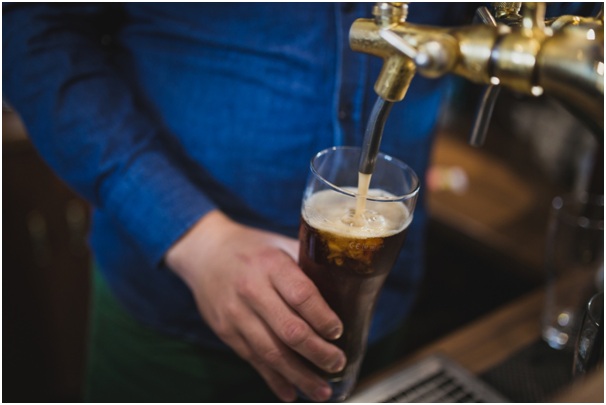If you are considering adding beer to your restaurant or bar menu, draft beer could be a choice that pleases customers and is good for business. Tap beer is extremely popular and can be fresher and offer more flavour than bottled beer. It also gives patrons something the off-licence does not and creates another reason for customers to spend time in your establishment.

Need to know
There are a number of factors to keep in mind when selecting a draft beer. It is worth thinking about what kind of beer will complement your atmosphere and how to balance the profits against the storage and maintenance of the tap beer system.
Bottom line benefits
Draft beer can be a boon for business, drawing people to your bar and turning them into devoted customers. If the draft beer menu keeps expanding, beer aficionados will return consistently to sample what is new. With commercial bottle coolers in supermarkets and off-licences offering such a big range of cheap alcohol, give your clientele a reason to come back and spend their money with you.
The practicalities
There are a number of draft beer set-ups, with the focus being on keeping the beer cold and getting it easily from keg to customer. The simplest and most common system is direct draw, whereby the keg is cooled a few feet from service and dispensed using carbon dioxide (CO2) to push the fluid through tubing.
An air-cooled system, which needs a walk-in cooler and a fan to circulate cold air, could be a good option when offering a variety of beers. Glycol cooling, a sensible choice when the keg is further than 25 feet from the bar, keeps the beer cold by circulating propylene glycol around the beer lines.
Cleanliness is vital in maintaining a draft beer system, as highlighted in a report in the Telegraph. Refrigeration is also critical and companies such as FFD supply commercial chest freezers to ensure your draft beer is kept at the correct temperature.
Gas is also important. Beer generally contains CO2, although some also contain nitrogen. CO2, and possibly nitrogen, is necessary to deliver the beer and maintain its gas content. Get to know your beer and the right pressure and mix of gas to ensure that it reaches your customers in the best possible condition.